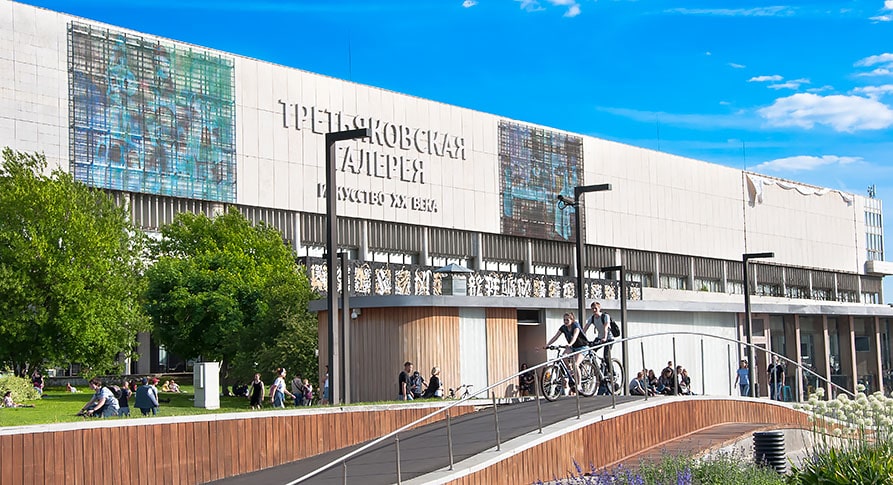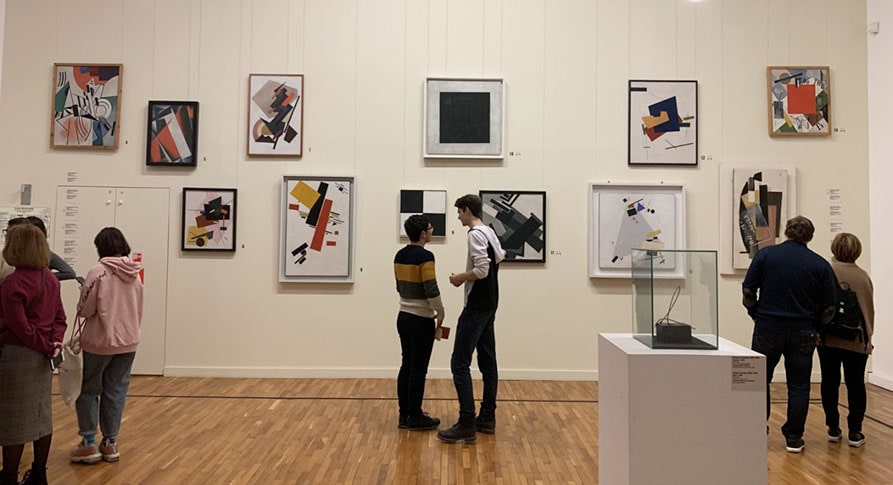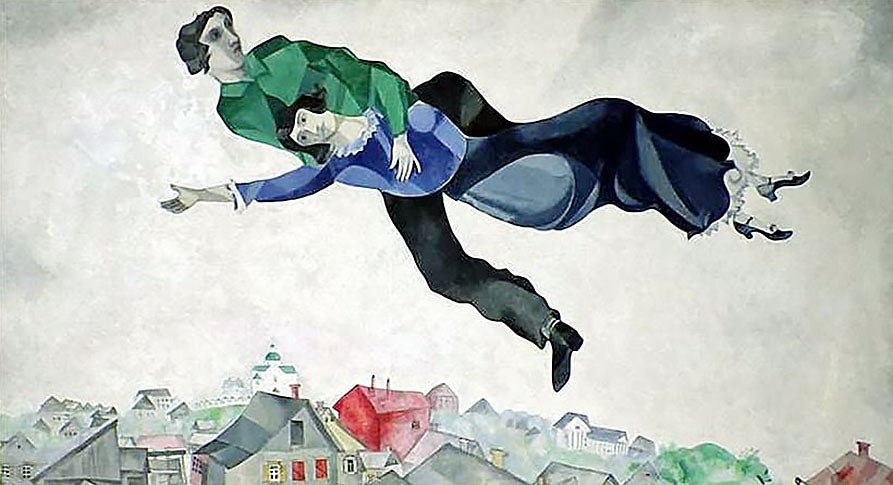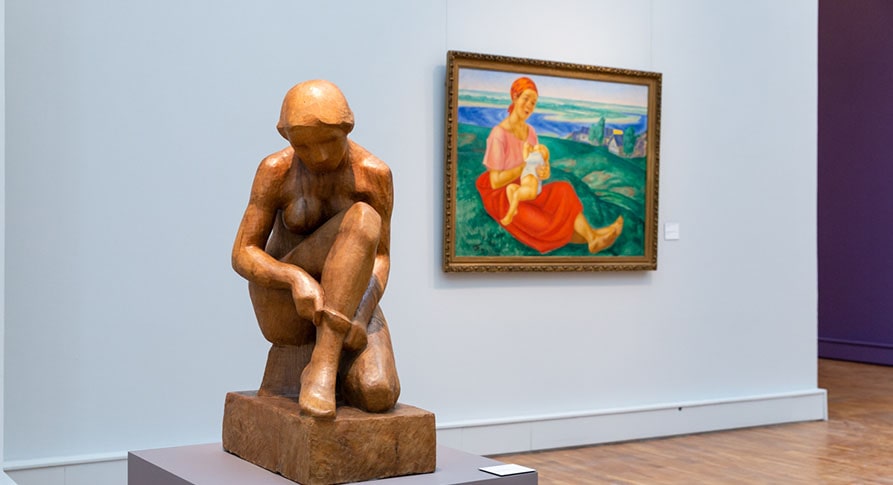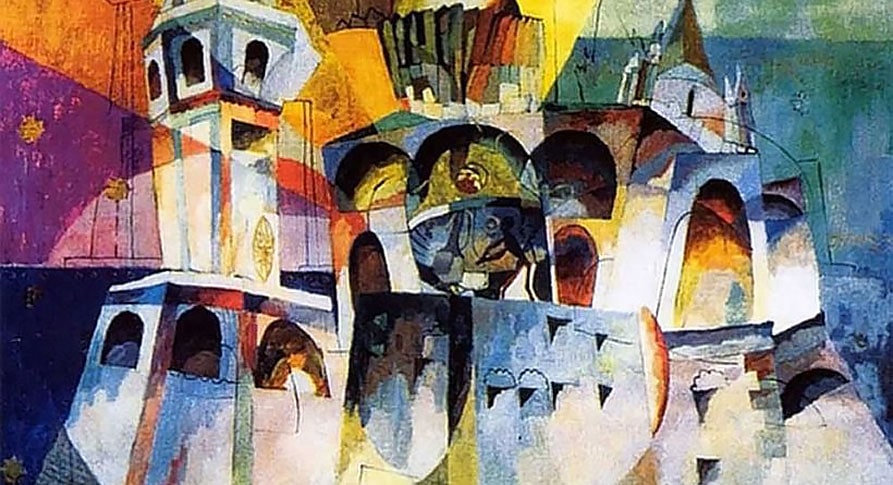The New Tretyakov Gallery
The New Tretyakov as it is commonly named occupies a huge pavilion at Krymsky Val Street on a scenic Moskva riverbank. This modern art branch of the famous Tretyakov Gallery is home to Russia’s most complete exhibition of national art from the early 20th century to the present day. It includes masterpieces of impressionism, Avant Garde of 1910s- 1920s, Socialist Realism, ‘Austere’ style, painting and sculpture spanning 7 decades of Soviet rule, and the "underground" unofficial art movements.
The New Tretyakov ruins a stereotype of the Soviet art as the typical socialist-realism images of muscle-bound men wielding scythes and busty women milking cows (although there’s that, too).
The exposition starts with the art of the 1900s and is set up in chronological order, so the evolution and development of the language of expressiveness, which was so intense in the 20th century, is clearly visible.
First 11 halls feature painting and sculpture by leading Avant Garde artists working over 1910s and 1920s. Works by these artists are some of the most valuable in the Tretyakov Gallery. The collection showcases artwork of Kazimir Malevich, Wassily Kandinsky, Marc Chagall, Michael Larionov, Kuzma Petrov-Vodkin, Natalia Goncharova, Pavel Filonov, Niko Pirosmani, Alexander Deyneka, Aristarch Lentulov, Zinaida Serebriakova, Lyubov Popova, Alexander Rodchenko (one of the founders of Russian Constructivism) and other heavyweight names. By the way: in terms of artistic significance, The Black Square by Malevich, the founder of Suprematism, is often compared to the Mona Lisa. The painting is the focal point of the entire collection of the New Tretyakov. There exist several versions by the artist himself that travel to international exhibitions, but the original Square, like the “smiling” girl from the Louvre, never leaves home!
Besides paintings, the works of sculptors and architects are on display, like Sergei Konenkov (known as ‘the Russian Rodin'), Vladimir Tatlin and Ivan Shadr.
Next section of 15 halls chronicles the development of artistic trends over 7 decades of Soviet period (1920s-1980s). It features many Socialist Realist paintings as those by Alexander Deneyka, Alexander Samokhvalov, Boris Johanson and Isaak Brodsky (considered the founder of Socialist Realism in art and the first painter to receive the Order of Lenin), cityscapes by Yuri Pimenov and rural landscapes of Tatyana Yablonskaya, as well as work by the ‘Queen of Soviet Sculptors’ Vera Mukhina (famous for her The Worker and Kolkhoz Woman statue, the emblem of Soviet Moscow and the logo of Mosfilm movie factory).
We continue with discovering the art from Nikita Khrushchev’s Thaw onwards, a period which allowed for creative development and experimentation even within Socialist Realism. Unofficial genres of this time included the reappearance of Abstract art, seen in the work of Yuri Zlotnikov, and of Nonconformist art by those who refused to accept the official style like Oskar Rabin and members of his circle.
Next 3 halls of painting, sculpture, installation and photography showcase the key unofficial and underground artistic movements which emerged towards the end of the USSR (1980-90s). These included Avant Garde, Soviet Nonconformism and Moscow Conceptualism. The exhibition contains the work of conceptual artist Ilya Kabakov, Alexander Kosolapov and Erik Bulatov’s subverting of ideological images and typography, sculptures and installations of historical arte facts by Boris Orlov, and the paintings of Viktor Pivovarov which simultaneously express criticism and nostalgia for the USSR.
The exhibit is completed with the latest art trends and is broken down by sections: Abstract, Kinetic and Optical Art, Mysticism and Surrealism, New Realism, Pop Art, Minimalism and Post-Art Abstraction, Soviet Pop Art, Conceptualism, etc. This layout is designed to help you navigate the world of contemporary art and its movements.
The museum holds both large-scale retrospectives of renowned Russian and Soviet artists and temporary exhibitions to showcase young contemporary artists.
It’s interesting to focus on Russian portrait painting of late 19th-early 20th centuries which is rich and diverse. It covers the gamut from gentle contours emerging through the pastel veil of impressionism through stern visages of socialist realism to the avant-garde weird forms.
It’s amusing trying to imagine which Russian artist would you like to paint YOUR portrait, eh?
Since the collapse of the USSR almost 30 years ago, attitudes toward Socialist Realism - the predominant artistic style of the Soviet period - has kept changing among art historians. But for the majority of ordinary art lovers it remains aesthetically pleasing to this day.
After the museum tour it’s a good idea to have an enjoyable walk in the adjacent park area which is of great interest. You will discover the Muzeon Park of Arts featuring an open air exposition of about 1000 sculptures by Soviet and contemporary artists. This modern art cluster stands in stark contrast with a spectacular Park of Fallen Idols, like this special sector of the park is commonly named. With the fall of the USSR, thousands of Soviet statues were destroyed or dispersed, while some ended up here. Today these dethroned idols, the tossed aside relics of the collapsed Empire attract thousands of curious visitors. You can ‘meet’ Lenin and Stalin, Dzerzhinsky, the founder of what became the KGB, and Leonid Brezhnev who was our country’s ruler from 1966 till 1982, and gaze at a massive emblem of the USSR…
Well, to misquote the famous Latin proverb 'Vita brévis, ars lónga', we can say: the life of idols is short - art is forever...

